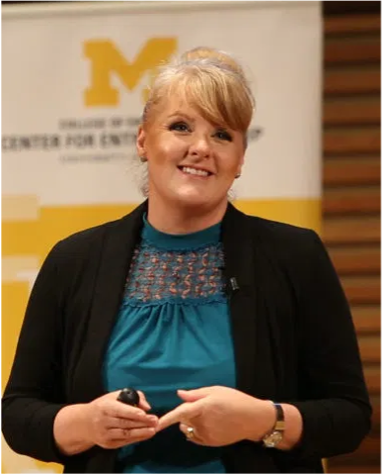
Raising “pre-seed” funding for a technology startup is like a second job on top of running your new company. So, it’s important to understand what you’re getting into if you decide to raise money at this stage. Pre-seed funding usually happens during the customer discovery and product development stage of a startup, but prior to your minimum viable product (MVP) and revenue. It may be used to cover a range of startup costs like legal expenses, equipment, travel, office or lab space, and early hires. Pre-seed funds usually come from friends and family, grants, and high-net-worth individuals (HNWIs) through your network. Rounds can range anywhere from $10,000 to $500,000, which might come in over many months. As the name suggests, it comes before the seed round, which is when most angel groups (established networks of accredited investors) and early stage venture capitalists (VCs) might invest.
In this article, you’ll find tips on how to approach the pre-seed funding stage, including insights from Ann Arbor area entrepreneurs who’ve successfully raised multiple rounds of funding.
Friends and family investment is very common at this stage.
It’s estimated that friends and family invest $60 billion per year into U.S. startups. After you’ve put in personal funds, your friends and family are the most likely to invest, based partly on your personal relationship and given the early stage of the business. While it can be awkward to approach friends and family, here are a few suggestions:
- Schedule lunch or coffee to catch up, or come up with other creative ways to connect.
- As part of catching up, share your business idea, ideally using a fantastic pitch deck. Throw out that you’re fundraising, but don’t make an ask right away.
- Ask if they have suggestions on anyone that might be interested in investing, and feel them out.
- Don’t be shy about asking if they’d like to invest directly — you’ll need to have courage as an entrepreneur.
- Have your investment materials ready to offer them including your pitch deck and an investment contract (which could be a straight loan agreement, convertible note, or common stock purchase agreement).
- Be completely transparent about the risks of investing at this stage and that it’s possible to lose all their money.
- Let them know it’s completely fine not to invest if they’re not comfortable, and that you’re just presenting them with an opportunity.

After self-funding Mi Padrino with $50,000 of her own money, founder and CEO Kim Gamez raised money from friends in her community.
“We had a good reputation in our hometown of Jackson, Michigan because of our other businesses, and so I just did a Facebook post about the business idea to see if anyone was interested in learning more. We actually had a number of close friends reach out, and some ended up investing. I had no idea what I was doing. My background was in marketing, so, I created a magazine about Mi Padrino to talk to potential investors. I had no idea what a slide deck was at the time.”
Over the course of more than a year, Kim was able to raise a $1.2 million round that started with friends and eventually transitioned to an equity round lead by Astia Angels.
Grant funding might also be available at this stage.
Frequently, government and non-profit grants are available depending on your industry. Startup grants are designed to help regional and national economies accelerate startup activity in strategic industries and take on some of the early risk when most private investors won’t. In Michigan, there are several grant programs including:
- Business Accelerator Fund grants through Ann Arbor SPARK or the MI-SBDC, depending on your location.
- MTRAC funding through participating universities.
- SBIR / STTR grants through various U.S. federal departments.
- Emerging Technologies Fund through MI-SBDC, which provides matching grants to SBIR / STTR grants.
Kim Gamez also had success attracting grant funding through Ann Arbor SPARK. “We started working with a great attorney in Ann Arbor, who suggested that we talk to Ann Arbor SPARK. Bill Mayer, SPARK entrepreneurial services vice president looked at our magazine and was probably like, “What the heck is this?” But we went through the whole startup process with SPARK, and we were eventually awarded grants of $10,000, then $20,000, and eventually $50,000 total. We also went through SPARK’s Entrepreneurial Boot Camp and learned so much through the whole process. Through that, I met a bunch of other entrepreneurs and investors. Two of them became close mentors and one invested.”

MJ Cartwright, CEO of Court Innovations, shared her story of obtaining significant grant funding for the company in its early days.
“At Court Innovations, we were fortunate to have received a phase one grant from the University of Michigan’s Third Century Fund (currently not available). It was a small feasibility grant, available because we were founded at the U-M Law School. That grant enabled us to pull in a few courts to see if the product would work. Then we got a second phase grant which was well over a million dollars, and that allowed us to expand across Michigan and Ohio and to multiple types of court cases. That was really our initial pre-seed round. Again, we were fortunate, but I would suggest that other startups look for grant opportunities in their space. The progress we made from that early grant funding enabled us to raise a Series A round led by Belle Capital. It was such a blessing to have that earlier money, which was nondilutive to future investors, and which laid the foundation for what was to come.”
Court Innovations is a graduate of the SPARK Central Innovation Center. The company applied business accelerator grants to support strategic growth and marketing efforts. After raising its Series A investment round, Court Innovations went on to become a PE portfolio company.
High-net-worth individual investors are less common at the pre-seed stage, but still a possibility.
Also known as angels, most aren’t willing to bet on an idea. Instead, they are likely to get more interested as customer discovery and product development progress. Perhaps the most likely angels are those with backgrounds and interests in your industry. Many were successful entrepreneurs themselves. Finding them is all about networking.
Kim Gamez: “I would tell other entrepreneurs to just get out there. Be a go-getter. Look at every opportunity for investment, and look five steps ahead and backpedal from there. For example, ‘I want to get to this investor, how do I get there?’ I got to Univision by saying I want to get to the chairman of their board and asked myself, ‘How do I get to him?’ I found a retiree from Univision and reached out through LinkedIn. He responded in about 20 minutes, and I got connected through him.”
As with friends and family, have your pitch deck and investment contract ready when you pitch high-net-worth individuals. Depending on their investment experience, they may have a more extensive due diligence process; be ready for that and don’t be shy. Early angel investors will be attracted by your passion for the business opportunity.
Accelerators and pre-seed venture funds are another possibility for funding at this stage.
Accelerators seem to be popping up everywhere and many offer an investment component as part of the package, ranging from $25,000 to $150,000. There are many good accelerators that accept pre-seed companies — but do your research before applying and joining. Many accelerators take a significant equity stake in the company. This needs to be weighed against the benefits, which should include a great program and network to leverage.
In Michigan, we have the First Capital Fund, managed by ID Ventures, and the pre-seed fund, managed by Michigan Rise, both of which are funded by the state. Funding is limited and selective. With any venture fund, the best way in is a warm introduction.
Kim Gamez described her experience with early-stage funds: “One of my first mentors introduced me to ID Ventures, which manages the First Capital Fund. We scheduled a first coffee meeting with them, and I went to the wrong place! I was so embarrassed. They asked tough questions at the meeting, and I thought, “No way is this happening.” But after several meetings, they said they wanted to invest $150k! I completely freaked out in my car when I found out and called everyone I knew.”

Brandon McNaughton, Founder and CEO of Akadeum Life Sciences, was able to obtain pre-seed funding as part of the NSF I-Corps program and early VC funding from eLab Ventures. “The money will follow if you’re doing a good job. Be careful not to only think about investment, it’s also about what you’re working on and achieving business milestones. Don’t come up with an idea then immediately ask for money. The most important thing is your time, and a new venture could take 10 years of your life. You should be the hardest person to convince to do it. Work to find and define the opportunity. Hopefully, you have the highest bar because it’s your life and work. There are probably thousands of early-stage funding mechanisms, accelerators, angel groups, etc. Don’t think about navigating all that in the beginning, you will eventually. You need to set the groundwork first. Even for later funding rounds I think it’s the same – it’s our work that precipitates the financing. Ask yourself, do you understand your market, your product, your stakeholders? Have you talked to your potential customers? Before we started Akadeum, I personally met with 40 people early on. Then as a team, we interviewed more than 100 target customers through I-Corps. This can be incredibly valuable early data that you might be able to grant funders or investors.”
In conclusion, there is no one right way to raise a pre-seed funding round.
But it helps to have passion and creativity, a good network, and a solid foundation for the business, built on customer-focused product development. In addition to the points above, here are a few final thoughts:
- Get lots of feedback and prove to yourself that the business opportunity is great and that you’re ready to commit a chunk of your life to it, before you raise outside money.
- Put some of your own money in the business first to show investors that you have ‘skin in the game.’
- The pre-seed round might be an ongoing process for six – 12 months of bringing in investors on a rolling basis and doing the work as money comes in to fund it.
- Talk to an experienced startup attorney to decide on the right investment vehicle and draft the contract.
- Create your budget, ideally five years out, to determine how much money you need to raise and by when.
- Follow lean startup principles and keep your costs as low as possible while you’re learning about your customers and shaping your product to their needs.
- And remember that getting from customers to revenue is the ultimate goal and the best form of funding.
Good luck out there!